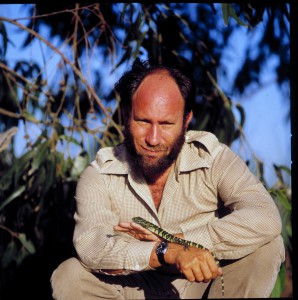
A new species of desert tortoise has been named for the late Dr. David J. Morafka, who taught in the biology department from 1972 to 2002.
The discovery was made by researchers at the U.S. Geological Survey Western Ecological Research Center, the Royal Ontario Museum in Ontario, Canada, the California Academy of Science, the University of Arizona, and Lincoln University in Jefferson City, Missouri, after a lengthy study on the historical identification and taxonomy of the desert tortoise found in the Mojave and Sonoran deserts of California, Arizona and Mexico. Since its initial discovery in 1861, the desert tortoise, also known as the Agassiz’s land-tortoise or by the scientific name Gopherus agassizii, has been treated as one species. DNA evidence from this recent study concludes the presence of a second, separate species, which the study’s authors have named Gopherus morafkai. Their findings were published in the journal ZooKeys.
Professor Morafka had been part of a 2002 study by authors of the latest findings that speculated not all tortoises in southwestern United States and northwestern Mexico were of the same species. For his research on the conservation and biology of the Agassiz desert tortoise in particular but also the bolson tortoise, as well as contributions in the areas of desert biology, biogeography and ecogeography, the study’s authors named the new desert tortoise species in his honor. Gopherus morafkai, or the common name Morafka’s desert tortoise, occurs in Arizona and Mexico.
“We are very pleased to honor his memory in this way,” said co-author Kristin H. Berry, Ph.D., with the USGS Western Ecological Research Center.
To read the official press release from USGS on the discovery, click here.
Further information about the study can be viewed here.